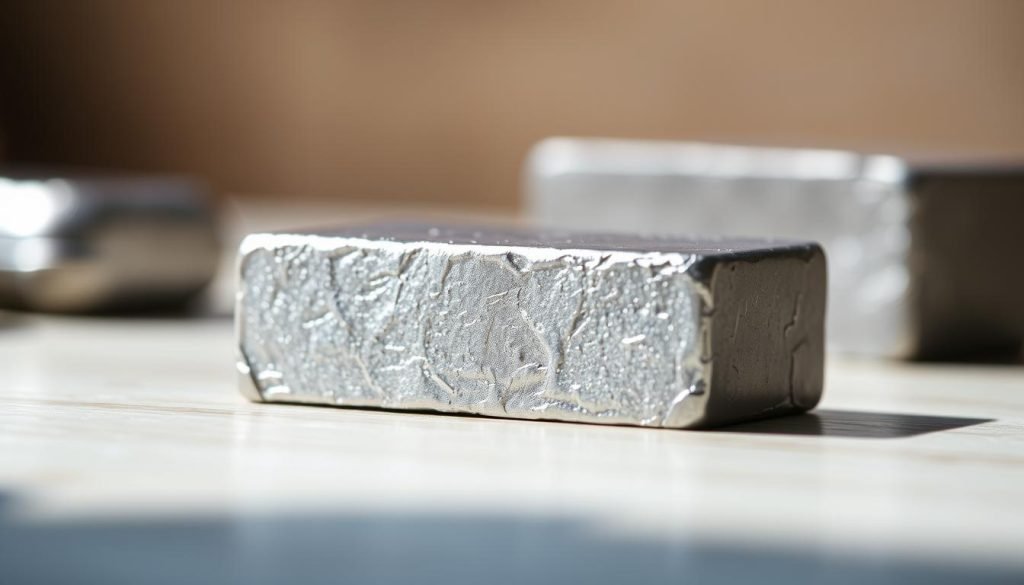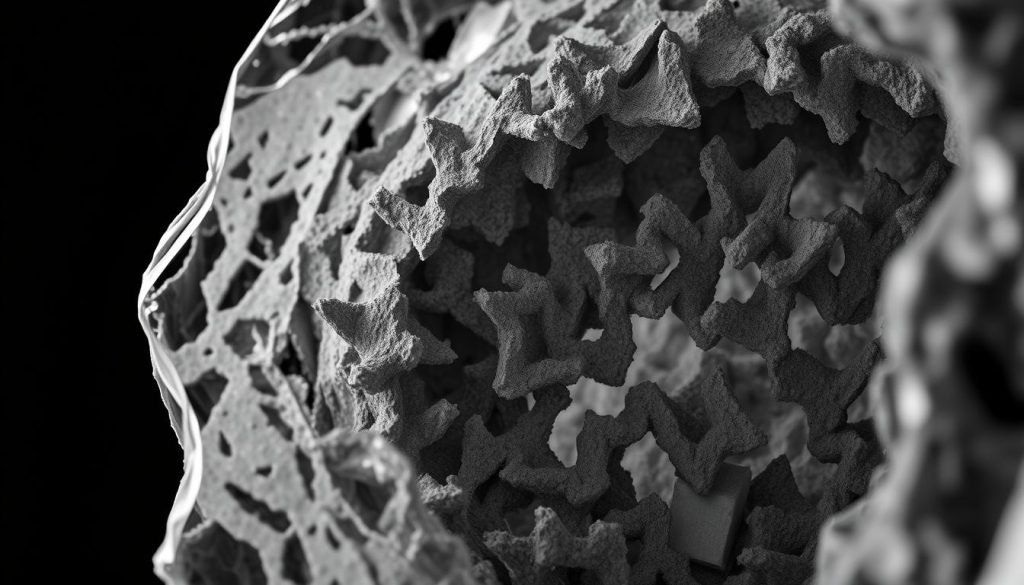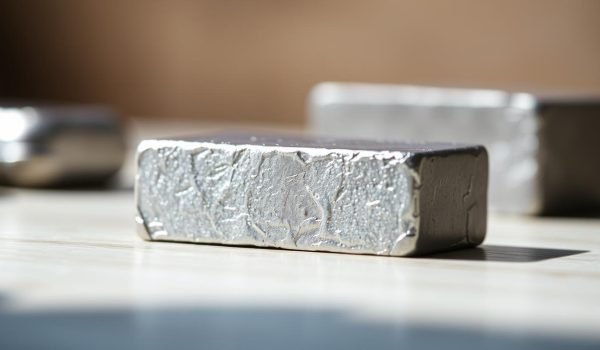You might have wondered whether lead is magnetic or not. The answer lies in understanding the properties of metals and how they interact with magnetic fields. Not all metals are magnetic; some are diamagnetic, meaning they are weakly repelled by a magnetic field.

Lead is one such metal that is diamagnetic due to its paired electrons, which provide no magnetic moment. This property makes lead unique and useful in various applications, from radiation shielding to batteries.
As we explore the world of magnetism and metals, you’ll discover why lead doesn’t exhibit magnetic properties and how it interacts with magnetic fields. This comprehensive guide will uncover the facts and misconceptions surrounding lead’s magnetic nature.
Understanding Lead’s Basic Properties
To understand lead’s properties, we need to examine its chemical and physical characteristics. Lead is a complex metal with a range of attributes that influence its behavior in different contexts.
Chemical Composition and Structure of Lead
Lead has an atomic number of 82, indicating its position in the periodic table. Its electron configuration plays a crucial role in determining its chemical properties, including how it forms compounds and reacts with other elements. Lead forms various oxides, such as PbO, PbO₂, and Pb₃O₄, which are significant in understanding its chemical behavior.
Physical Characteristics of Lead
Physically, lead is known for being a soft, dense metal with a density of 11.35 grams per cubic centimeter at 25°C. It has a relatively low melting point of 327.5°C (621.5°F) and a tensile strength of 18 Mpa. Lead is also highly ductile and malleable, making it suitable for various industrial applications. Its corrosion resistance is another significant property that contributes to its longevity in certain uses.

Is Lead Magnetic?
You’re likely wondering if lead is magnetic; the simple answer lies in its inherent properties. Lead is not magnetic in the conventional sense that most people understand. When you bring a magnet near lead, nothing happens because lead is diamagnetic.
Defining Magnetism in Materials
Magnetism in materials is categorized into three main types: ferromagnetism, paramagnetism, and diamagnetism. These categories are based on how materials respond to external magnetic fields.
Lead’s Classification as a Diamagnetic Material
Lead is classified as a diamagnetic material, meaning it repels magnetic fields instead of attracting them. This is due to its electron configuration, where the 6s and 6p orbitals are filled with paired electrons spinning in opposite directions, canceling out any magnetic effect.
The Science Behind Lead’s Non-Magnetic Nature
The science behind lead’s non-magnetic nature lies in the behavior of its electrons. To understand this, we need to explore how electron configuration affects the magnetic properties of materials.
Electron Configuration and Magnetism
Electron configuration plays a crucial role in determining a material’s magnetic properties. In materials like iron, nickel, and cobalt, unpaired electrons in the outer shells create magnetic moments, leading to ferromagnetic behavior. You can observe this when these metals are attracted to magnets.
How Paired Electrons Affect Magnetic Properties
In contrast, lead has a full outer energy level with all electrons paired in the 6s and 6p orbitals. This pairing results in no net magnetic moment, making lead non-magnetic. When exposed to a magnetic field, lead exhibits a negative magnetic susceptibility, weakly repelling the magnetic field.
This diamagnetic behavior is characteristic of materials with paired electrons, where the magnetic moments generated by the electrons cancel each other out, resulting in no overall magnetization.
How Lead Interacts with Magnetic Fields
When lead is exposed to a magnetic field, it exhibits a unique interaction that is characteristic of its material properties. This interaction is rooted in the diamagnetic nature of lead.
Diamagnetic Repulsion Explained
Diamagnetic repulsion occurs when lead is placed in a magnetic field, causing its electrons to create tiny circulating currents. These currents produce a weak opposing magnetic field, resulting in lead being slightly repelled by the magnet.
Can Magnets Work Through Lead?
A magnet can indeed work through lead, but its effectiveness depends on the thickness of the lead and the strength of the magnet. The magnetic field can penetrate lead, although it may be slightly weakened.
Factors That Can Alter Lead’s Magnetic Behavior
While lead is generally considered non-magnetic, certain factors can alter its magnetic behavior. You might be surprised to learn that the purity of the lead and the temperature it’s exposed to can significantly impact its magnetic properties.
Role of Impurities
Impurities in lead can drastically change its magnetic behavior. If lead is contaminated with ferromagnetic metals like iron, it may exhibit weak magnetic attraction. Even paramagnetic elements like aluminum can slightly alter its magnetic response.
Temperature Effects
Temperature is another critical factor that affects lead’s magnetic properties. At very low temperatures, lead’s diamagnetic effect becomes stronger. In fact, when cooled to near absolute zero, lead becomes a superconductor, completely expelling magnetic fields.
Common Misconceptions About Lead and Magnetism
The magnetic properties of lead are frequently misunderstood, leading to several common misconceptions. You might have heard that lead can be magnetized or that it behaves like ferromagnetic metals such as iron or nickel. However, lead is neither ferromagnetic nor paramagnetic, meaning it doesn’t naturally attract or hold a magnetic field.
Can Lead Ever Be Magnetized?
You cannot magnetize lead permanently, regardless of the strength of the external magnetic field applied. While lead is not ferromagnetic, under certain conditions, it can exhibit temporary magnetic effects when exposed to a strong external magnet. However, this effect disappears as soon as the magnet is removed.
Distinguishing Between Magnetic and Non-Magnetic Metals
Understanding the difference between magnetic and non-magnetic metals is crucial. Magnetic metals, like iron, nickel, and cobalt, have unpaired electrons and a domain structure that allows them to be magnetized. In contrast, non-magnetic metals like lead do not have these properties, making them incapable of being magnetized. You should be aware that lead’s density is not related to its magnetic properties, debunking another common myth.
Practical Applications of Lead’s Non-Magnetic Properties

You might be surprised at how lead’s lack of magnetism is utilized in different fields. Its non-magnetic nature makes it a valuable material in various applications where magnetic interference must be avoided.
Industrial and Scientific Uses
Lead is used in shielding sensitive electronic equipment from external magnetic fields. It’s also utilized in cable shielding for high-voltage applications, preventing electromagnetic interference. In scientific research, lead’s non-magnetic properties are beneficial in experiments requiring minimal magnetic influence.
Shielding Applications
Lead’s high density and non-magnetic properties make it ideal for radiation shielding in medical and nuclear settings. It’s used to block radiation without interfering with magnetic fields in X-ray and MRI facilities. This unique combination of properties makes lead a crucial material in these applications.
Conclusion
To summarize, lead is not magnetic, but rather diamagnetic, meaning it weakly repels magnetic fields. This property is due to its electron configuration, where paired electrons result in no net magnetic moment. Factors such as impurities, temperature, and alloying with other metals can influence lead’s magnetic behavior, but pure lead remains non-magnetic under normal conditions.
Understanding lead’s non-magnetic properties is crucial for various industrial and scientific applications, including shielding and manufacturing. However, it’s also important to acknowledge the health and environmental concerns associated with lead, limiting its use in many modern contexts.
As we continue to explore material properties like magnetism, it’s essential to consider both the scientific principles and practical implications when working with lead and other metals.
FAQ
What is the magnetic property of lead?
Lead is diamagnetic, meaning it is weakly repelled by magnetic fields due to its paired electrons.
Can lead be magnetized?
No, lead is not ferromagnetic and cannot be magnetized under normal conditions.
Can magnets work through lead?
Yes, magnets can work through lead, as it is not a ferromagnetic material that can block or significantly attenuate magnetic fields.
How do impurities affect lead’s magnetic behavior?
Impurities, particularly ferromagnetic materials like iron or nickel, can alter lead’s magnetic properties, potentially making it slightly magnetic.
Does temperature affect lead’s magnetic properties?
At very low temperatures, lead’s diamagnetic properties remain, but certain conditions can slightly alter its magnetic behavior.
What are the practical applications of lead’s non-magnetic properties?
Lead’s non-magnetic properties make it useful for shielding applications, particularly in industries requiring protection from magnetic interference.
How does the electron configuration of lead influence its magnetism?
Lead’s electron configuration, with paired electrons, results in its diamagnetic behavior, as unpaired electrons are typically required for magnetism.




